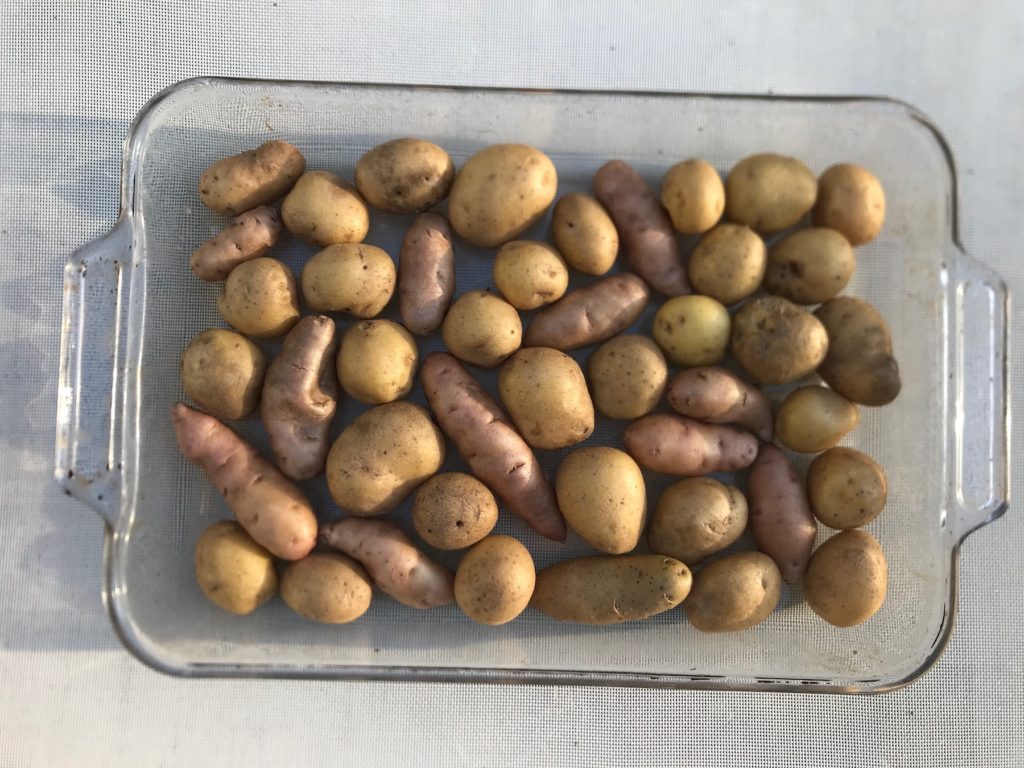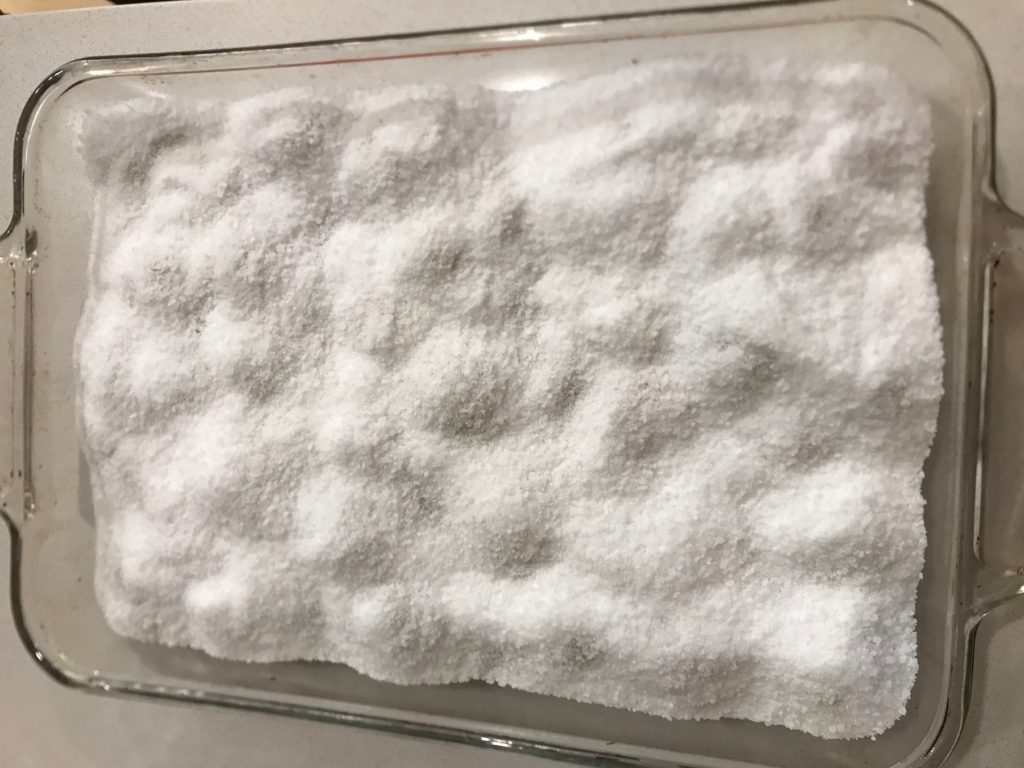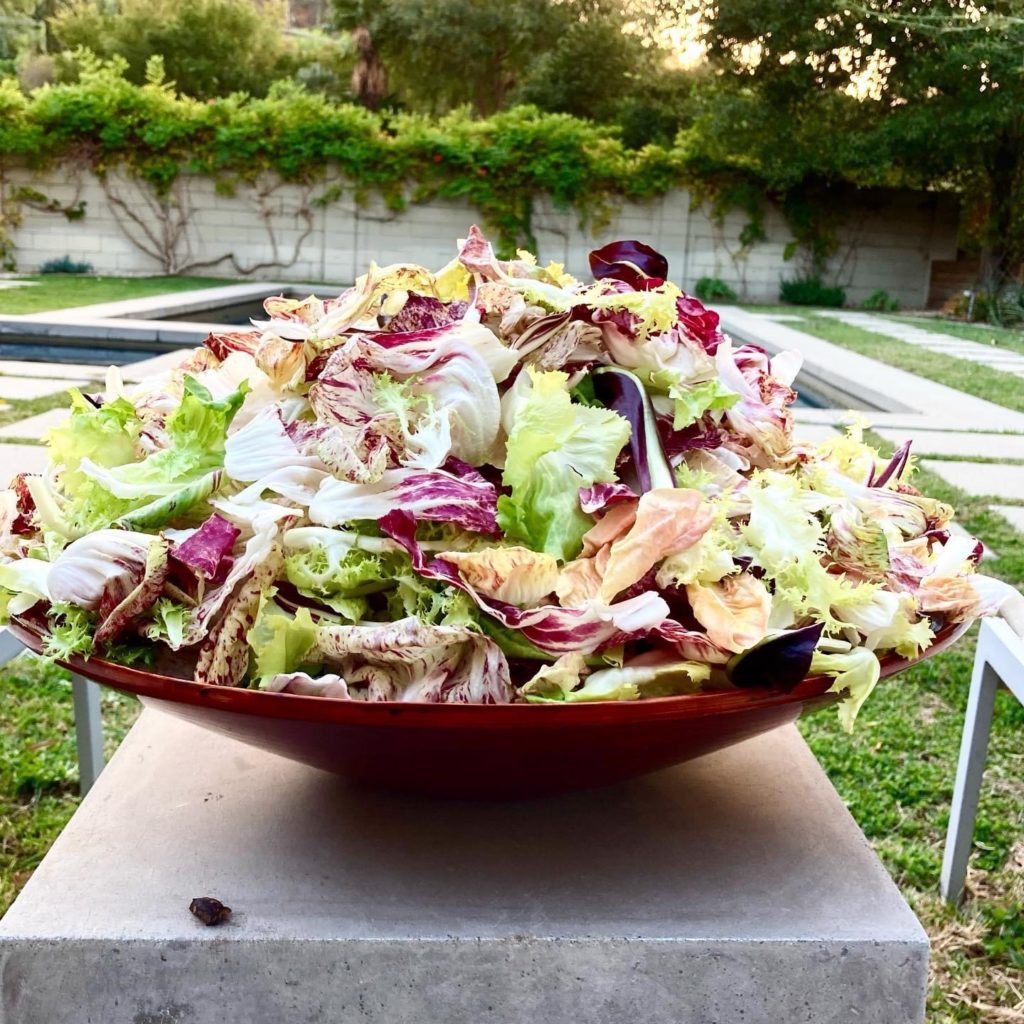Your box contains the following items, give or take any subs.
- 2lb. green romaine/red butter lettuce/red little gems
- 1/2lb. mesclun
- 1/2lb. spigariello
- 1lb. spring onions
- 2lb. English peas
- 1 medium leek
- handful mint
- 1 bunch orange carrots
- 2lb. mixed citrus
- 1lb. white peach and donut peach
This week’s box is a reprise of the box from a month ago, as we wait for the summer produce to kick into gear. It gives you a chance to make one of my all time favorite pastas, which can easily be vegetarian.
I also suggest you slice your stone fruit, chop a few almonds, mince some spring onion, toss with the mesclun salad greens, and add some fresh goat cheese, and enjoy many of the ingredients we offer, all in one salad bowl.
The signature items of the week are english peas and a leek, with a handful of mint leaves, giving you the opportunity to make a favorite pasta dish, spaghetti with peas and ricotta. I ate this dish at Romans in Brooklyn a few years ago, and I had to know how to make it at home, cooking various versions for myself over a few pea seasons. I asked Dave Gould, the former chef of Romans, to write out the recipe for our benefit.
I guess this is a Romans classic creation, though we rarely did the same exact thing twice, so now it’s a Martin’s country kitchen creation.
Start by shelling all of your peas. The pods can get smashed, almost bruising as you go, into a stockpot. If you’re vegetarian, fill the pot with water until it comes 3/4 of the way up the peas, so they are not fully submerged. Pea pod broth can be really delicious, but it must be concentrated, i.e. not watered down. Put in a clove or 2 (the spice), a tiny shard of cinnamon stick, leek tops trimmed of any discoloration, and a small handful of either dry porcini or dry morel mushrooms. And if you’re not vegetarian, substitute the water with good chicken broth.
Bring to a rigorous boil over a high flame, skimming any foam that rises as you go. You should find at this point that the pea pods have wilted and are now barely submerged. Simmer over a very low flame for 5 minutes, drop in a few sprigs of mint, then leave to cool for 10 minutes, at which point it is ready to strain. You will need 1 cup of broth per person and the rest can be held for various future purposes.
To build the sauce, slice the white leek bottoms (about 1T per person) thinly and sweat gently in a mixture of butter and olive oil, with a few cracks of black pepper and a few leaves of sage or basil. When very soft, but not colored, add the necessary amount of broth per person. Bring to a boil and season fully with salt. Boil spaghetti in unseasoned water until it is about 6 minutes away from being finished, and add it to the sauce along with all of the peas that you desire. Everything should simmer gently in the liquid, practically submerged until the last minute or two, so you will need to periodically add pasta water and taste consistently for seasoning.
Ideally you can eyeball that when the noodles are cooked there will be about 1/2 cup of broth left in the pot per person. Turn the flame off and add a heaping tablespoon of ricotta per person, the light green leek middles, sliced thinly, a few torn mint leaves and a small squeeze of lemon juice. Stir aggressively, but quickly, so as to not agitate the ricotta too much. The idea is that it remains clumpy and turns your broth milky and rich.
Divide evenly amongst soup bowls and shower with freshly grated pecorino cheese, black pepper and good green olive oil.
Enjoy!
Martin


